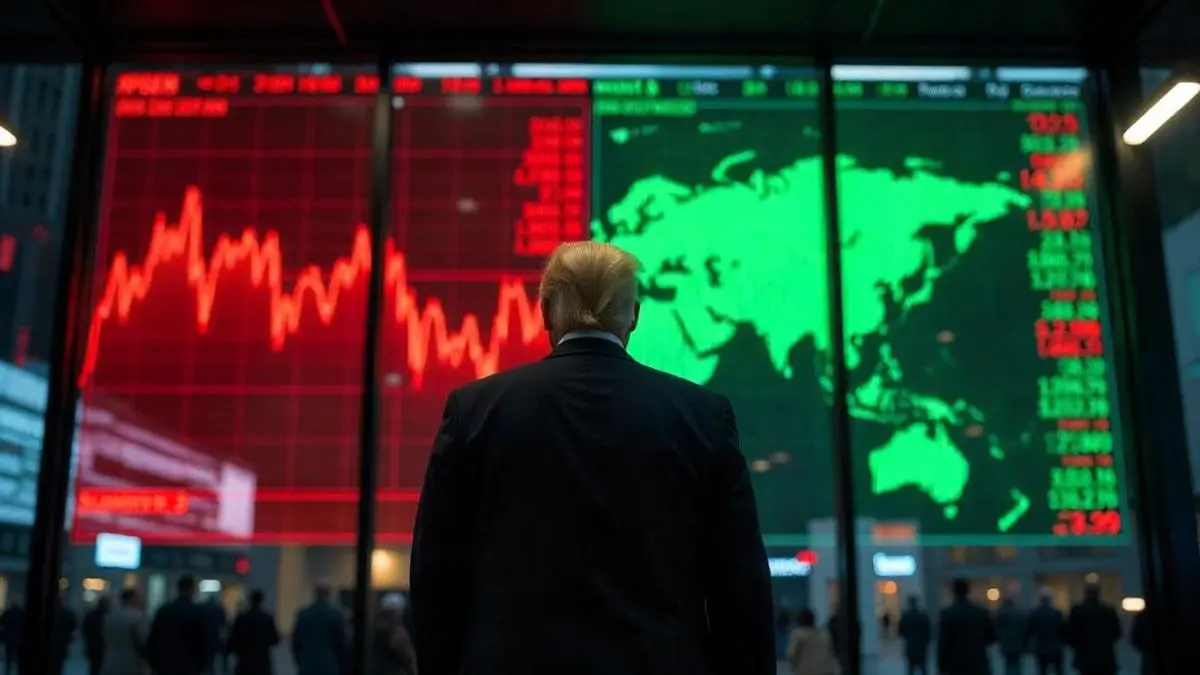Advertisement
Updated March 31st 2025, 21:59 IST
Donald Trump's Reciprocal Tariffs: Risky Stocks, Safe Stocks - List
Donald Trump's Reciprocal Tariffs: The move, aimed at balancing America's trade deficit, has raised a lot of concern among Indian exporters, who fear major disr

Donald Trump's Reciprocal Tariffs: With the April 2 deadline looming, Indian industry and government officials remain in the dark about the proposed tit-for-tat tariffs by US President Donald Trump.
The move, aimed at balancing America's trade deficit, has raised a lot of concern among Indian exporters, who fear major disruptions in most industries.
The Reciprocal Tariffs Plan
The United States' reciprocal tariffs policy allows for the imposition of higher import duties on countries with which it has a trade deficit. According to President Trump, the United States is facing unfair trade practices, as other nations charge higher tariffs on American goods. He argues that this has led to a staggering trade deficit of USD 1 trillion, negatively impacting American businesses and workers.
India-US Trade Dynamics
India and the US enjoy a sizable trade relationship in which the US is India's largest trading partner during the span of 2021-22 to 2023-24. The US consumed 18% of India's exports and 6.22% of imports during 2023-24, leading India's bilateral trade surplus of USD 35.32 billion. This surplus, however, set Indian exports into the crosshair of increased tariffs.
Which Sector Stocks Are At Risk And Which Are Safe?
The suggested tariffs would probably impact industries in varying degrees, with agriculture and manufacturing products shouldering the largest burden.
Agriculture: Indian farm exports, including shrimp, processed foods, and dairy products, are expected to bear the greatest brunt. For instance, USD 2.58 billion worth of shrimp exports face a tariff differential of 27.83%, while dairy products can face a staggering hike in tariffs to the tune of 38.23%.
Processed food, sugar, and cocoa exports of USD 1.03 billion will also face a 24.99 per cent tariff increase, making Indian snacks and confectionery expensive in the US.
Cereals, vegetables, fruits, and spices valued at USD 1.91 billion are under a 5.72 per cent tariff bracket, impacting rice and spice exports.
Dairy products valued at USD 181.49 million will be severely affected by a tariff difference of 38.23 per cent, increasing the prices of ghee, butter, and milk powder, reducing their market share.
Edible oils valued at USD 199.75 million of exports face a tariff of 10.67 per cent, increasing the cost of coconut and mustard oil.
Alcohol, wines, and spirits face the highest tariff hike of 122.10 per cent, though exports are valued at only USD 19.20 million.
Live animals and animal products face a tariff difference of 27.75 per cent on USD 10.31 million worth of exports.
Industrial Goods: Major sectors like pharmaceuticals, diamonds, and electronics are also vulnerable. Pharmaceuticals, India's largest industrial export at USD 12.72 billion, face a tariff hike of 10.90%, while diamonds and electronics could face hikes of 13.32% and 7.24%, respectively.
Diamonds, gold, and silver with USD 11.88 billion in exports will face a tariff hike of 13.32 per cent, increasing the cost of jewellery and reducing its competitiveness.
Electrical, telecom, and electronics exports valued at USD 14.39 billion face a tariff of 7.24 per cent, increasing the cost of iPhones and other communication devices.
USD 7.10 billion worth of machinery, boiler, turbine, and computer exports will be subject to a 5.29 per cent tariff increase, affecting India's engineering exports.
USD 5.71 billion worth of chemicals (non-pharma) will be subject to a 6.05 per cent tariff, lowering the US demand for Indian speciality chemicals.
Textiles, fabrics, yarn, and carpets with USD 2.76 billion worth of exports will be subject to a 6.59 per cent tariff, making Indian textiles costly.
Rubber products, such as tyres and belts, with USD 1.06 billion worth of exports will be subject to a 7.76 per cent tariff, and paper and wood articles, with USD 969.65 million worth of exports, will be subject to a 7.87 per cent tariff.
USD 1.71 billion worth of ceramic, glass, and stone products with exports will be subject to an 8.27 per cent tariff, affecting the demand.
Footwear, with USD 457.66 million worth of exports, will be subject to a high tariff gap of 15.56 per cent.
Minimal or No Impact Sectors
Certain industries will not be affected by extra tariffs since the US is already charging higher duties. Ores, minerals, and petroleum worth USD 3.33 billion are being charged a negative tariff differential of -4.36 per cent, meaning that there will be no new tariffs charged.
In the same way, garments, which account for USD 4.93 billion worth of exports, have a difference of -4.62 per cent, with the tariffs remaining unchanged.
(With inputs from PTI)
Published March 31st 2025, 21:56 IST
